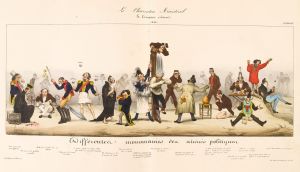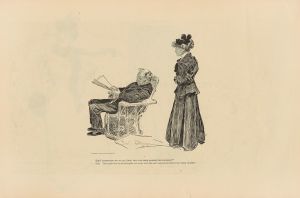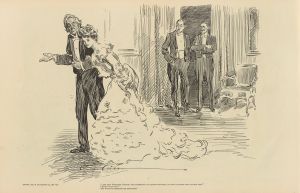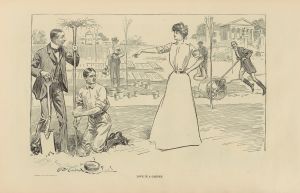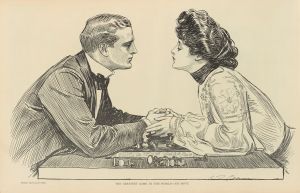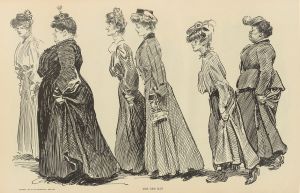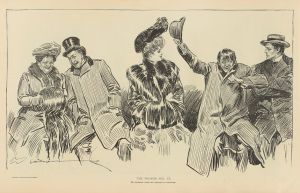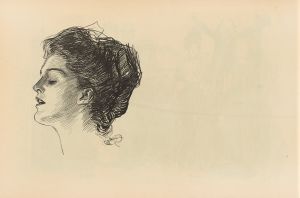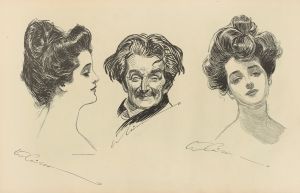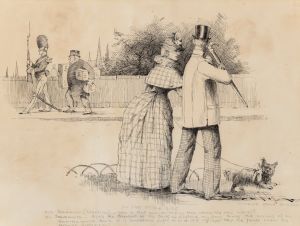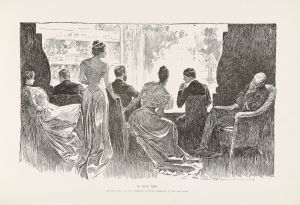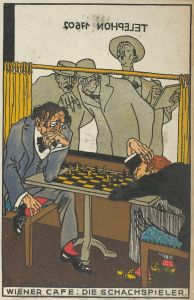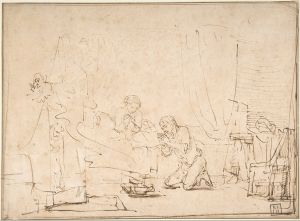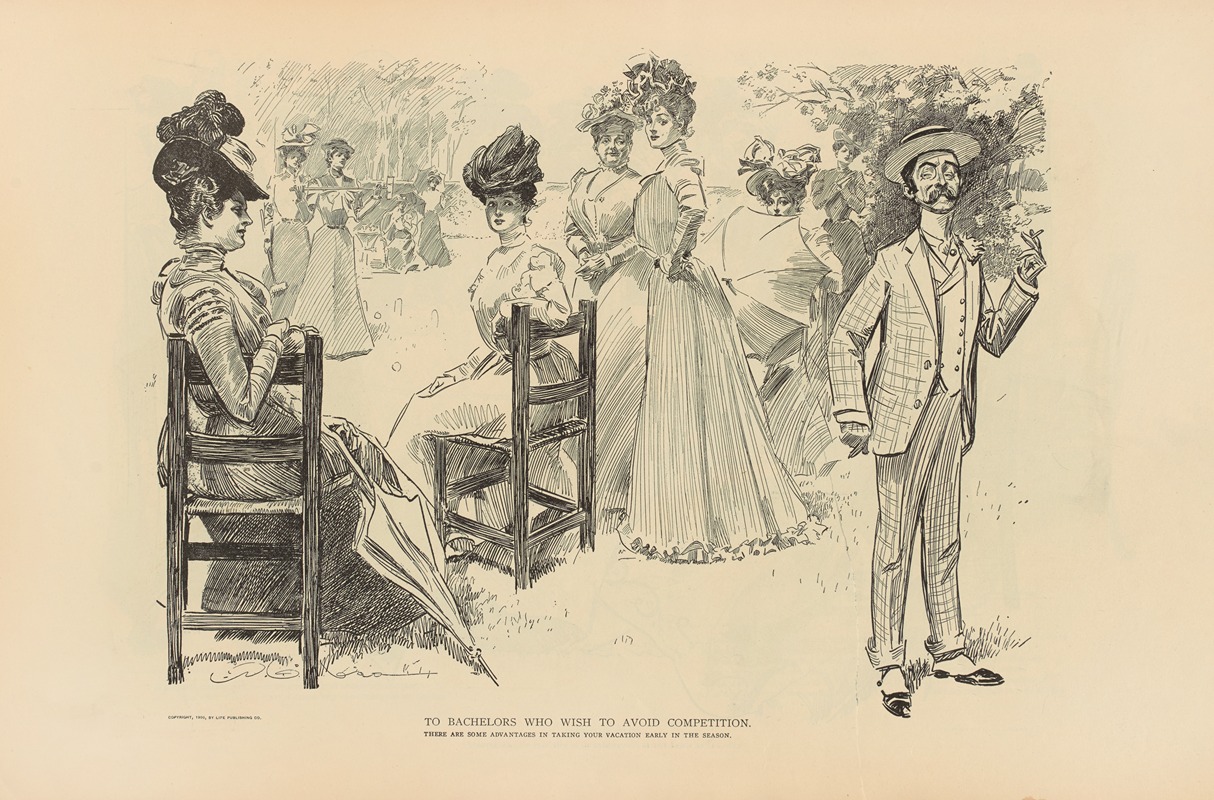
To bachelors who wish to avoid competition
A hand-painted replica of Charles Dana Gibson’s masterpiece To bachelors who wish to avoid competition, meticulously crafted by professional artists to capture the true essence of the original. Each piece is created with museum-quality canvas and rare mineral pigments, carefully painted by experienced artists with delicate brushstrokes and rich, layered colors to perfectly recreate the texture of the original artwork. Unlike machine-printed reproductions, this hand-painted version brings the painting to life, infused with the artist’s emotions and skill in every stroke. Whether for personal collection or home decoration, it instantly elevates the artistic atmosphere of any space.
Charles Dana Gibson was an influential American illustrator, best known for his creation of the "Gibson Girl," an iconic representation of the American woman at the turn of the 20th century. One of his notable works is the illustration titled "To bachelors who wish to avoid competition." This piece is a part of Gibson's extensive portfolio that humorously and insightfully captured the social dynamics and cultural norms of his time.
Gibson was born on September 14, 1867, in Roxbury, Massachusetts. He began his artistic career at a young age, studying at the Art Students League in New York City. His talent quickly gained recognition, and he started contributing illustrations to various magazines, including Life, Harper's Weekly, and Scribner's. It was during his time at Life magazine that he developed the "Gibson Girl," which became a cultural phenomenon.
The illustration "To bachelors who wish to avoid competition" is a satirical piece that reflects Gibson's keen observation of gender roles and societal expectations. The artwork typically features a group of women, often depicted as confident and self-assured, which was a hallmark of the Gibson Girl image. These women are shown in a manner that suggests they are actively engaging in social activities, perhaps in a setting that would have been familiar to the upper-middle-class society of the time.
Gibson's work often highlighted the evolving role of women in society, capturing the shift from the Victorian ideals of femininity to a more modern, independent woman. The Gibson Girl was characterized by her fashionable attire, athleticism, and poise, embodying the spirit of the Progressive Era in the United States. This era was marked by significant social and political change, including the women's suffrage movement, which sought to secure voting rights for women.
In "To bachelors who wish to avoid competition," Gibson humorously addresses the anxieties of single men who might feel threatened by the increasing independence and assertiveness of women. The illustration suggests that these bachelors might find themselves at a disadvantage in a social landscape where women are no longer passive participants but active competitors in various aspects of life, including romance and social status.
Gibson's illustrations were not just artistic expressions but also social commentaries that resonated with the public. His ability to capture the zeitgeist of his era made his work immensely popular and influential. The Gibson Girl became a symbol of the new American woman, and Gibson's illustrations played a significant role in shaping public perceptions of gender and social norms.
Charles Dana Gibson continued to produce illustrations throughout his career, leaving a lasting impact on American art and culture. His work remains a valuable historical record of the societal changes that occurred during his lifetime. "To bachelors who wish to avoid competition" is just one example of how Gibson used his art to reflect and critique the world around him, making him a pivotal figure in the history of American illustration.





